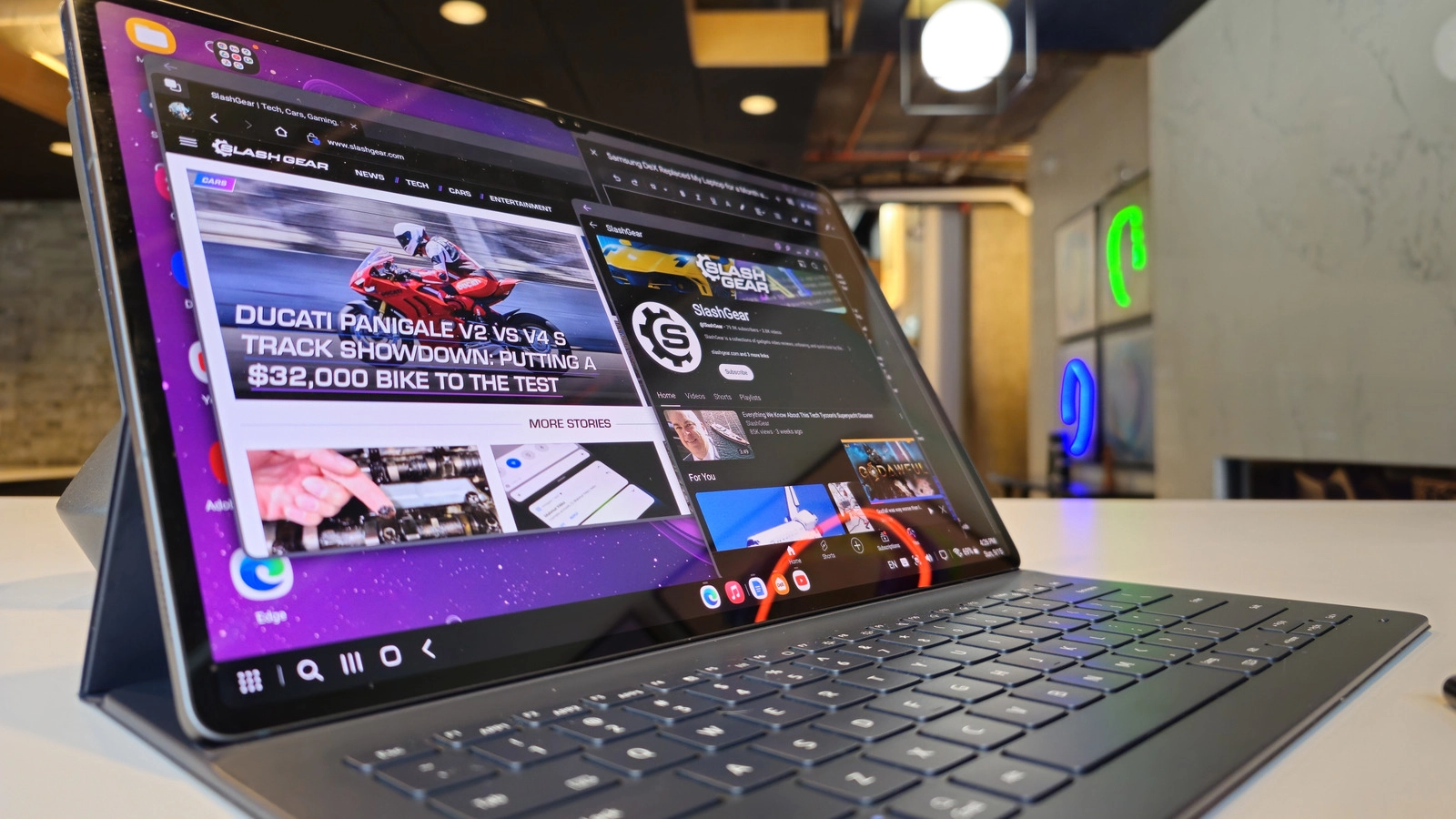If you own a Samsung Galaxy smartphone or tablet released in the past several years, you could be ignoring one of its most game-changing features. As mobile devices continue to get more powerful, many users dream of a future where they can replace larger computers entirely. But that future is already here, at least for some people. Samsung DeX short for "desktop experience" is a software feature that allows you to transform your Galaxy device into a Windows-like desktop when you connect it to a monitor or TV.
Samsung DeX is a free feature included on select Galaxy smartphones and tablets released from 2017 onward. It is most commonly available on the company's higher-end models, such as the flagship Galaxy S range, foldable Galaxy Z range, and Galaxy Tab S range of tablets. To check whether your device has it, look for the Samsung DeX listing in the Connected Devices section of your Galaxy device's Settings app. If it's there, you're in luck, and vice versa.
Samsung DeX replaced my laptop almost entirely, leaving me blissfully free of the hassles that come with Windows 11, with the exceptions of gaming and video editing. However, that experience won't be the case for everyone. To help you decide if it's useful, we'll explain what Samsung DeX does and cover some upcoming changes that may impact its future capabilities.
Samsung DeX can be activated either by plugging a Galaxy device into an external display using any HDMI or DisplayPort cable, or by connecting wirelessly to any TV or smart monitor that supports the Miracast standard. Once connected, your phone or tablet will project a desktop environment on the external display instead of mirroring the screen. Apps open in windows, just like you're used to on a computer, making the experience better for large-screen multitasking. You'll also see a Windows-style taskbar where you can pin app shortcuts, or they can be pinned on the desktop itself.
On tablets, DeX can also run directly on the device, with no need to connect to another display. Another tablet-specific option was also introduced with One UI 6. It's called New DeX for tablets, and it is a hybrid between regular One UI and classic DeX. You retain your normal Android interface in this mode, but apps open in DeX windows. You can swap between the two DeX modes from Settings.
Depending on your needs, DeX can replace your laptop entirely, although you'll definitely encounter quirks. Android apps tend to assume they'll be used on a touchscreen, which means not all of them play nice with a mouse and keyboard. And longtime PC users may come up short when looking to match specific functionality (for example, Microsoft Office users will find the Android versions of programs like Word to be comparatively anemic). However, it's safe to say that DeX and ChromeOS have similar functionality; if one platform meets your needs, the other is likely to do the same.
Recent rumblings suggest upcoming shakeups to DeX. As of this writing, Samsung's One UI 8 skin based on Android 16 has only arrived on the new Galaxy Z Fold 7 and Flip 7, while beta tests continue for the S25 family and other eligible devices. Meanwhile, Google is adding its own DeX-esque desktop mode to this release. Beta software indicates that Samsung will be revamping DeX from the ground up, working hand-in-hand with Google to use its new software as a base. Those changes may arrive with an upcoming software update, but a colleague here at SlashGear hasn't yet noticed them on the stable version of DeX running on the Z Fold 7 with One UI 8.
It's unclear whether this change will constitute an upgrade or downgrade for DeX. On one hand, Samsung is throwing away eight years of development, which could include functionality that DeX fans have come to expect. After all, why would the hardware giant spend money on maintaining its own desktop mode when Google will do the heavy lifting? On the other hand, Google's new initiative will even see ChromeOS folded into Android. That could provide an incentive for app developers to expand support for mouse and keyboard input, along with a better responsive design for windowed rendering.
Whether and how these changes manifest remains to be seen as Samsung pushes updates. If they don't arrive on the stable One UI 8 this year, they may appear on One UI 8.5 early next year. For now, DeX remains one of the most underrated and useful hidden Samsung Galaxy features.




